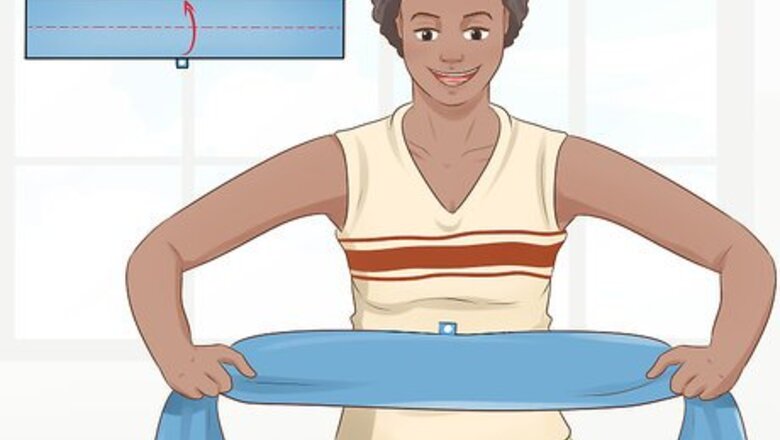
views
Tying the Moby Wrap around Yourself

Fold the wrap in half. You need to begin by wrapping the Moby wrap around yourself before you create a hold for the baby. Hold the wrap in front of your navel with the label in the middle facing away from you. Fold the wrap in half and place it around your waist. The stitched edges from each half should be on top, closest to you.

Cross the ends behind your back. Take the two ends of the fabric and cross them behind your back. This should form an “X” over your back. The logo should still be in front of your navel.
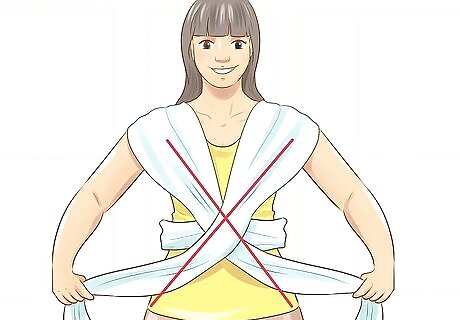
Make an “X” across your chest. Choose one of the ends and bring it across the opposite shoulder. Take the other end and bring it across the other shoulder, forming an “X” across your chest.

Tie a knot to secure the Moby wrap. Bring the fabric ends that are leftover around your back, forming a second, smaller “X” just below the larger “X.” Tie it into a knot. Or, you can wrap the excess fabric around to the front of your body, and tie the knot just below your navel.
Newborn Hold
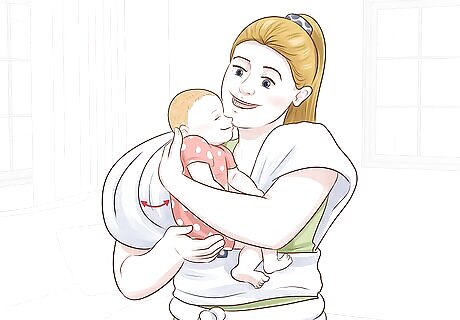
Open a pocket for your baby. This wrap is made for newborn to three-month-old babies. Take the shoulder piece that is closest to your body and open it, creating a pocket. Hold your baby up to the piece of fabric that is opposite from the one that is closest to you.

Spread the fabric over your baby’s body. Slide your baby into the pocket. The baby’s legs should be in the fetal position. Spread the fabric over the baby’s shoulders, back, and bottom. Take the opposite section of fabric and spread over the baby’s body again.
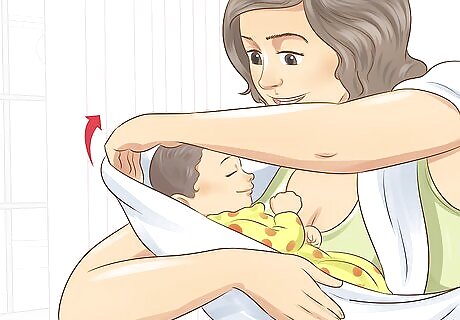
Pull the fabric over the baby’s head. The section with the logo should be leftover. Pull it over the baby’s body for added support. Tuck the baby’s head into the shoulder section of the fabric if you don’t wish for it to be free.
Hug Hold
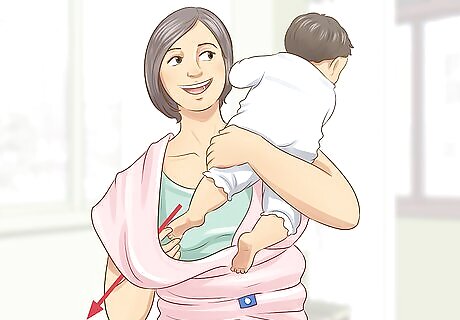
Slide your baby into the first shoulder hold. This wrap is made for babies 3-5 months that can fully stretch their legs. Take the shoulder piece that is closest to your body, and slide one of the baby’s legs through the hole. Hold the baby up to your opposite shoulder as you do this.

Put the second leg into the other hole. Slide the fabric up over the baby’s shoulder and bottom. Spread it out until it reaches the hollow of your baby’s knee. Then, pull your baby’s second leg through the section with the logo.
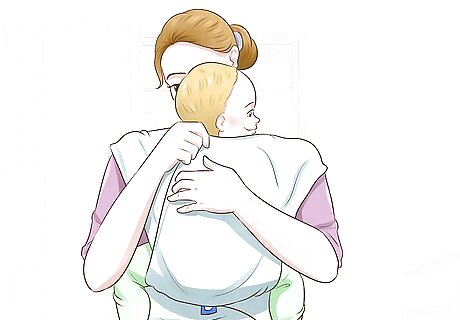
Pull the fabric over your baby. Spread the fabric until it covers the baby’s shoulders and back. Make sure that the legs are still free when you do this. You can choose to leave the head free, or tuck the head into one of the shoulder sections.
Hip Hold
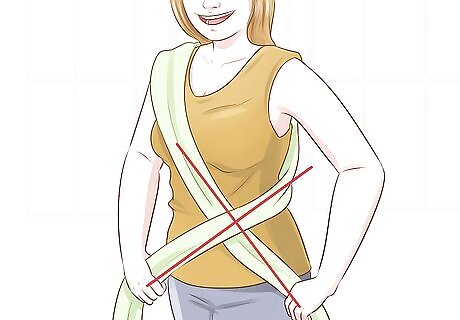
Shift the fabric “X” to your side. This wrap is ideal for babies that are 5 months and older. Locate the piece of fabric that is closest to your body. This is the side that you will hold your baby. Shift the fabric so that one “X” is on the side of your body instead of crossing over the front.
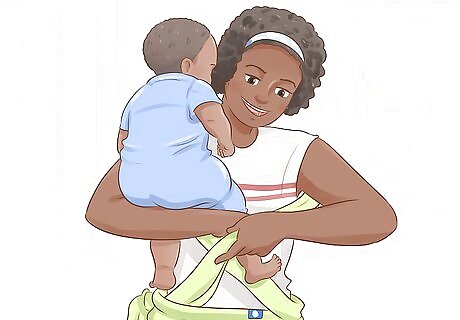
Put the first leg through the shoulder hole closest to you. Gently pull one of the baby’s legs through the hole of the shoulder section that is closest to you. Spread the fabric over the baby’s shoulders, back, and bottom, reaching to the hollows of the baby’s knees.
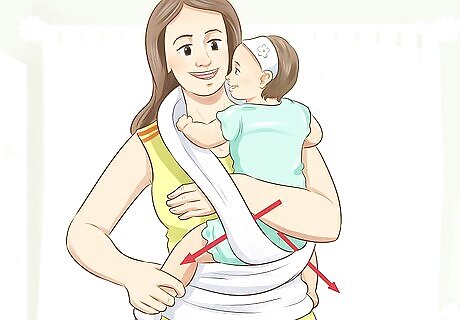
Pull both legs through the holes. Pull both of the baby’s legs through the section with the logo. Pull up the fabric over the baby’s back and bottom. The baby should now be propped up on your hip comfortably.
Kangaroo Hold

Lower the baby into the middle section. This wrap is ideal for babies 8 pounds (3.6 kg) and heavier. Hold your baby up to one of your shoulders. Your baby should be in the fetal position. Lower the baby into the section with the logo. Spread the fabric over the baby’s shoulders and bottom.
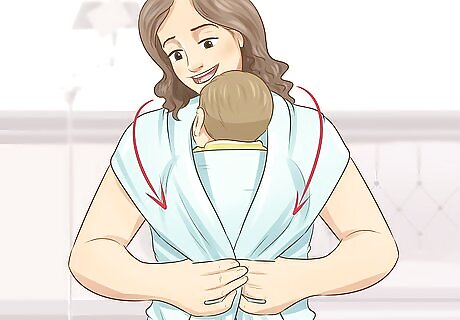
Bring the ends of the fabric over the baby. Take one loose end of the fabric, and bring it over the baby’s bottom towards your opposite hip. Repeat with the opposite end of the fabric. The baby’s bottom should be completely covered and secure. Wrap the loose ends of your fabric, and tie it in a double knot around your hips or back.

Tuck the baby’s head into the shoulder section. Tuck the baby’s head into whichever shoulder section their head is closest to. The baby’s mouth and nose should be visible and not covered. Make sure the chin is lifted off your chest.




















Comments
0 comment